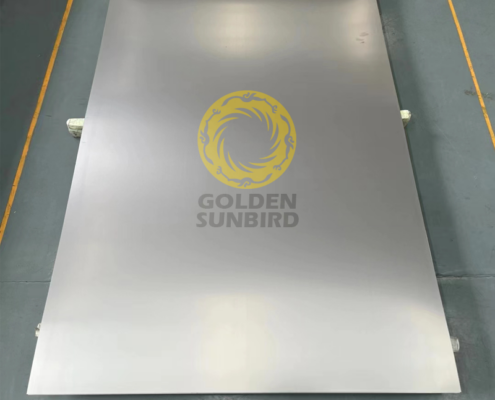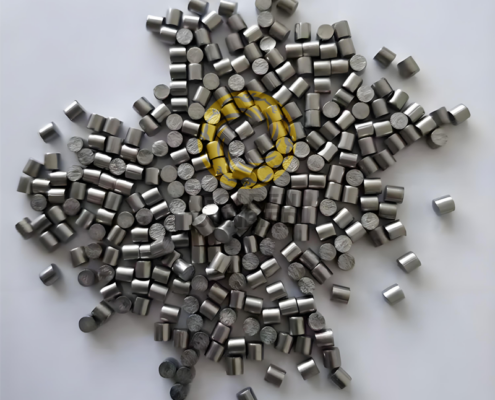Golden Sunbird Metals is a premier supplier of hafnium and hafnium alloys in China, specializing in high-quality hafnium and hafnium alloy rods, wire, particles, plate, sheet, and strip products at wholesale prices with the option for customization to meet specific requirements. Our hafnium alloys are renowned for their exceptional performance in high-temperature environments, making them ideal for use in aerospace and nuclear industries. At Golden Sunbird Metals, we are committed to meeting the diverse needs of our customers. If you’re interested in purchasing our hafnium alloy products in bulk or need customized solutions, please contact us at [email protected].
FAQs
What Are Zirconium Alloys?
Zirconium alloys are materials that are primarily composed of zirconium mixed with a small percentage of other elements, enhancing their properties for specific applications. The most significant characteristic of zirconium alloys is their outstanding resistance to corrosion, particularly in high-temperature water and steam. This trait makes them highly valuable in the nuclear industry for cladding fuel elements.
Key Points:
- Zirconium alloys consist mainly of zirconium combined with other elements.
- They are exceptionally resistant to corrosion.
- Primarily used in the nuclear industry for fuel cladding.
Why Are Zirconium Alloys Used in Nuclear Reactors?
Zirconium alloys are used in nuclear reactors because of their low neutron absorption cross-section and excellent corrosion resistance in water at high temperatures. These properties ensure that the material does not significantly interfere with the nuclear reactions while withstanding the aggressive environment within the reactor. This makes zirconium alloys an ideal choice for enclosing the uranium fuel in nuclear reactors, preventing radioactive materials from escaping and reacting with the surroundings.
Key Points:
- Zirconium alloys have a low neutron absorption cross-section.
- They show excellent corrosion resistance at high temperatures.
- Ideal for fuel cladding in nuclear reactors to contain radioactive materials safely.
What Are the Main Types of Zirconium Alloys?
There are several types of zirconium alloys, each designed for specific applications and environments. The most commonly used alloys in the nuclear industry include Zircaloy-2 and Zircaloy-4, which are favored for their good mechanical properties and corrosion resistance. Other variants, such as ZIRLO™ and M5™, offer improvements in corrosion resistance and strength, catering to the evolving demands of nuclear technology.
Key Points:
- Common types include Zircaloy-2 and Zircaloy-4.
- ZIRLO™ and M5™ are advanced variants with improved properties.
- Each type is tailored for specific applications and environments.
How Are Zirconium Alloys Manufactured?
The manufacturing process of zirconium alloys involves several steps, starting with the extraction of zirconium from its ore, usually zircon (ZrSiO4). The extracted zirconium is then purified and combined with selected alloying elements according to the desired alloy composition. The mixture is melted in a vacuum or inert atmosphere to prevent contamination and cast into ingots. These ingots are then processed through a series of hot and cold working steps to produce the final zirconium alloy product in the desired form, whether as sheets, tubes, or rods.
Key Points:
- Extraction from zircon ore and purification of zirconium.
- Alloying with specific elements and melting in a controlled environment.
- Processed through hot and cold working to achieve the final product form.
How Do Zirconium Alloys Resist Corrosion?
Zirconium alloys resist corrosion due to the formation of a stable, protective oxide layer on their surface when exposed to oxygen, including air and water. This oxide layer acts as a barrier that prevents further degradation of the material. Especially in high-temperature water and steam environments, such as those found in nuclear reactors, this property is crucial. The stability and integrity of the oxide layer are essential factors in the material’s performance and are a focus of ongoing research to enhance the corrosion resistance of zirconium alloys.
Key Points:
- Formation of a stable, protective oxide layer.
- The oxide layer acts as a barrier against corrosion.
- Crucial for performance in high-temperature environments.
Can Zirconium Alloys Be Recycled?
Yes, zirconium alloys can be recycled. The recycling process involves collecting and processing scrap zirconium from various sources, including industrial waste and used nuclear fuel cladding. The scrap is then purified to remove impurities and alloyed elements to produce pure zirconium or reformulated into new zirconium alloys. Recycling not only reduces the demand for raw materials but also minimizes environmental impact by reducing waste and the energy consumption associated with the extraction and processing of new zirconium.
Key Points:
- Zirconium alloys are recyclable.
- The process includes collection, purification, and reformulation.
- Recycling reduces demand for raw materials and environmental impact.
What Safety Measures Are Required When Handling Zirconium Alloys?
Handling zirconium alloys requires strict safety measures due to their reactivity, especially in powdered form, where they can pose a fire and explosion hazard. In bulk form, the risk is significantly lower, but safety protocols must still be observed. These include wearing protective equipment, ensuring proper ventilation, and storing zirconium alloys away from strong oxidizers. In nuclear applications, additional precautions are necessary to prevent exposure to radiation from used fuel cladding.
Key Points:
- Strict safety measures due to reactivity and potential hazards.
- Use of protective equipment and proper storage conditions.
- Additional precautions in nuclear applications to prevent radiation exposure.
How Does the Cost of Zirconium Alloys Compare to Other Materials?
The cost of zirconium alloys is relatively high compared to many other metals, primarily due to the complex extraction and purification processes required to produce them and their specialized applications, such as in the nuclear industry. However, when comparing costs, it’s important to consider the longevity and performance benefits these alloys offer, especially in terms of corrosion resistance and low neutron absorption. Over time, the initial investment in zirconium alloys can be justified by their durability and reduced maintenance requirements in harsh operating environments.
Key Points:
- Higher cost due to complex production processes and specialized applications.
- Longevity and performance benefits justify the initial investment.
- Durability and reduced maintenance requirements can offset higher costs.




